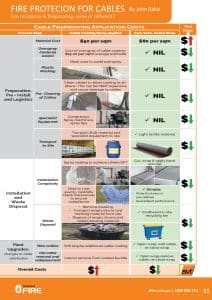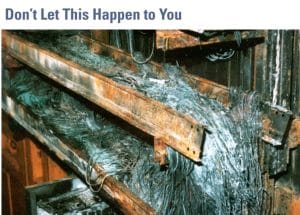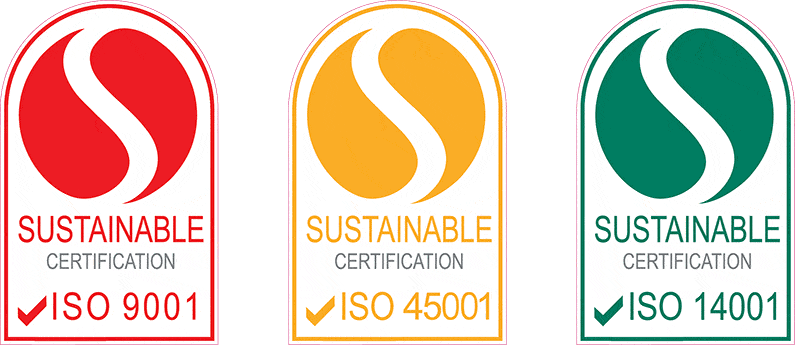Fires happen sadly, and we all know there are different fire protection strategies to control or suppress fire and limits the damages of the fire.
Cables as we all know have a primary use of providing power to equipment and machinery. Whether it be in an industrial application in a refinery, steel plant or mining operation, or in a commercial building or residential apartment, we see different requirements for protection of cables.
The article will discuss fire resistance, circuit integrity and rapid flame spread on PVC sheathed power cables and the different fire protection requirements; whether they are mandatory in our NCC/BCA for our buildings recommendations from insurers or wanted for just good asset or business interruption for example.
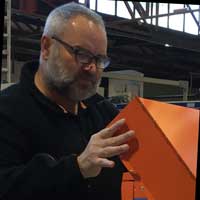
John Rakic
John Rakic is the proud Owner and Managing Director of Trafalgar Group with over 20 years of experience in the passive fire industry.
This is just a snippet of the full article. To read the entire article, download the pdf today.
Commercial And High-Rise Residential
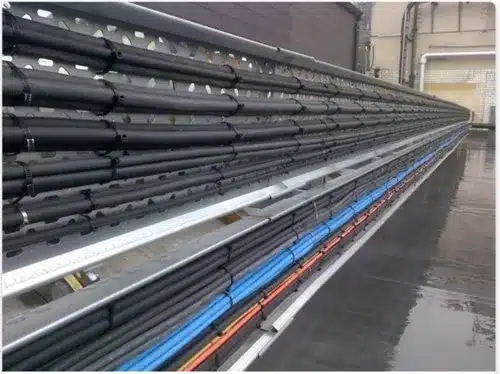
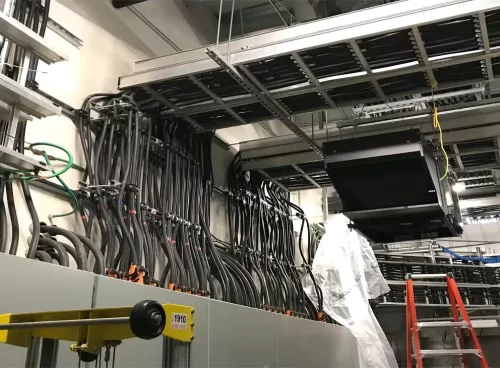
In Australia, we have the NCC/BCA which outline the technical design provisions for a compliant building.
Some of us know AS3000, the primary design standard used for NCC/BCA compliance; this is our wiring rules for electrical installations. We all respect those electrical contractors who are trained to design and install our cabling and deal with the hazards of live electricity; I would not want to do it!
In layman’s term we have critical equipment which need to operate and do things when we have a fire event, and the building fire alarm and warning system operates. I think the correct term for these is essential services. There are too many to list here, but an example that comes to mind is the wiring to smoke exhaust fans, which are used to control smoke movement in building in the advent of a fire. We do not want the fire to cause the smoke exhaust fans to stop working and allow additional smoke to spread.
Fire Rated Cables and Circuit Integrity
It has always bothered me that Australian Construction requirements in the NCC or BCA deal with fire and smoke separately.
A big part of Passive Fire Protection is the containment of fire, by separation of larger buildings into fire compartments. If a fire breaks out in one area of a building, we do not want the fire to spread to other parts of the building.
Passive Fire Protection Measures to Protect Cables For Fire Resistance
Another option or alternative to fire rated cables, is to enclose non-rated cables in a fire rated cable duct, enclosure or to wrap them in a fire tested blanket for example.
Fire testing methods exist for this; we have a relatively new section in AS1530 Part 4 which deals with critical services including electrical wiring.
One important design criteria that can be challenging here is the so called derating of cable current capacity if the passive fire protection increases the temperature adjacent to the cables as they are “buried” or enclosed by thermal fire protection assemblies.
I have seen this come up time and time again; and a standard FRL does not apply. Why? The criteria of temperature rise for a standard enclosure fire tested to AS1530 Part 4 is 180 degrees Celsius; whereas for high voltage cables for example, their operating design caters for temperatures to be kept as low as 80 degrees Celsius to provide the current output they need to. This requires much more expensive and thicker or higher-performance materials to withstand 1000 degrees Celsius and maintain almost ambient conditions inside the enclosure adjacent to the cables.
Fire Stopping of Openings In Fire Rated Barriers
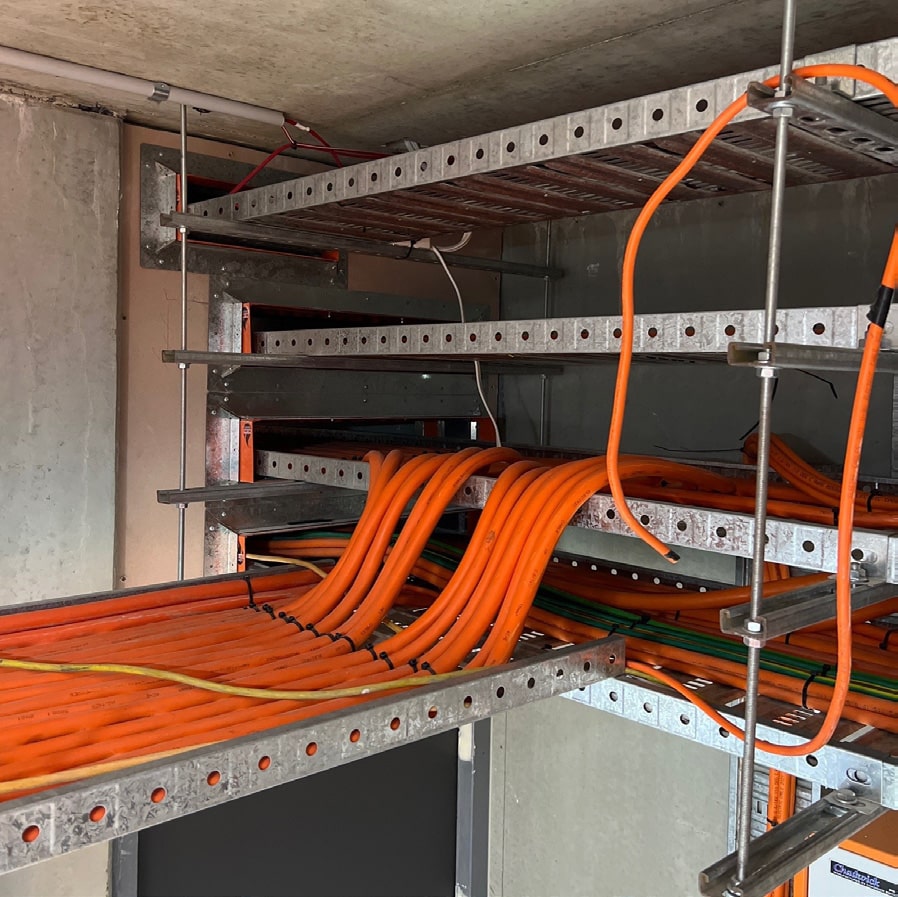
It would be remiss of me not to talk briefly about fire stopping of openings through fire barriers, as this has been a big part of my life. For standard non-rated cables, we expect them to burn and spread fire along the jacketing. However, we hope that correctly installed and fire-tested systems to close off the holes around the cables, cable trays, and the like will keep the fire in one fire compartment and stop it from spreading to another. This applies whether the fire is via a wall, shafts, ceiling, floor, or other fire-rated barrier types.
Spray Applied Fireproofing Cable Coating Materials
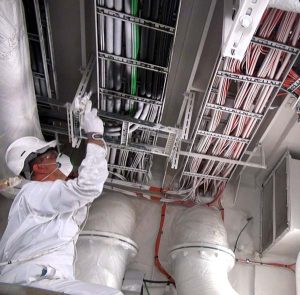
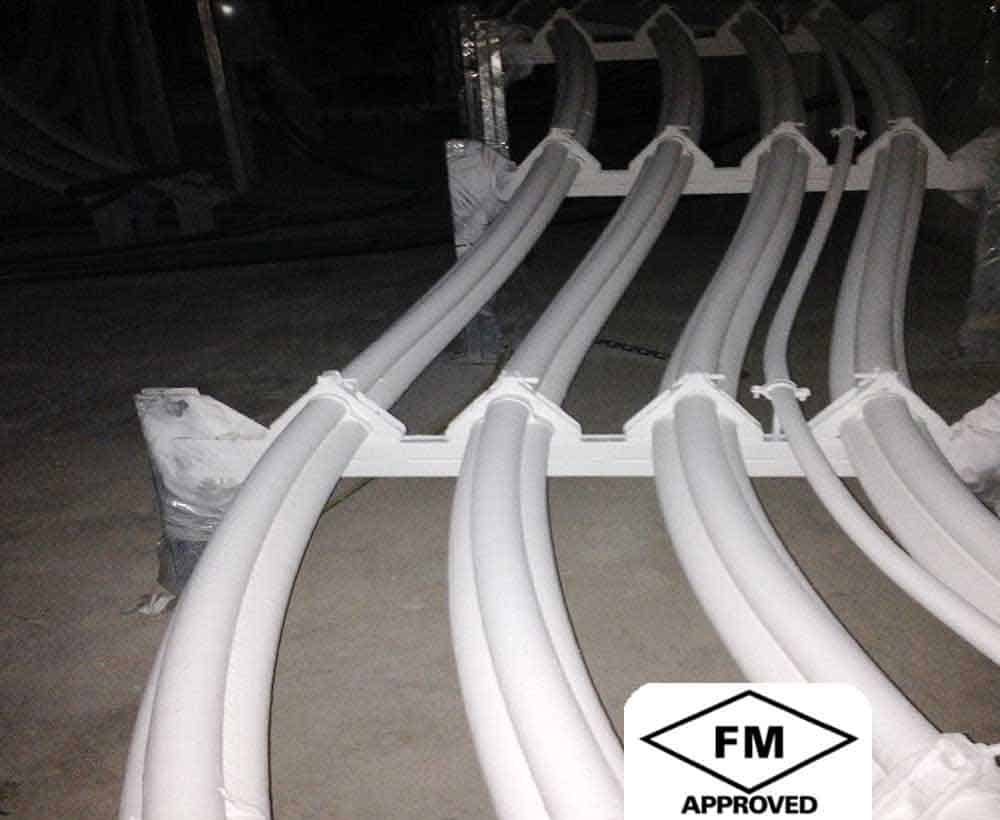
The only products or systems, until recently, that have been allowed to be used and have had FM Approval to FM3971, have been spray-applied, so-called fireproofing cable spray materials.
The very first material approved under FM3971 over 30 years ago was a German product from SVT Brandschutz, which was an intumescent cable coating. Today, most of the materials are Ablative, including SVT Flammotect A.
Application of Spray-Applied Fireproofing Cable Coating Materials:
Applying cable coating is not a straightforward task. The ablative coating is not a paint; it is a thick mastic and requires high pressure, a specialist machine, and experienced operators. The cables need to be clean of dust, grease, and grit to allow cohesion of the material.
A good example of the strength and experience of FM Global can be seen in the fact that even though 0.6mm of fireproofing cable coating can resist the harsh vertical flame spread test, FM Global insists on a minimum of 1.6mm of fireproofing cable coating.
So, back to the application of the fireproofing cable coating: Click here.


